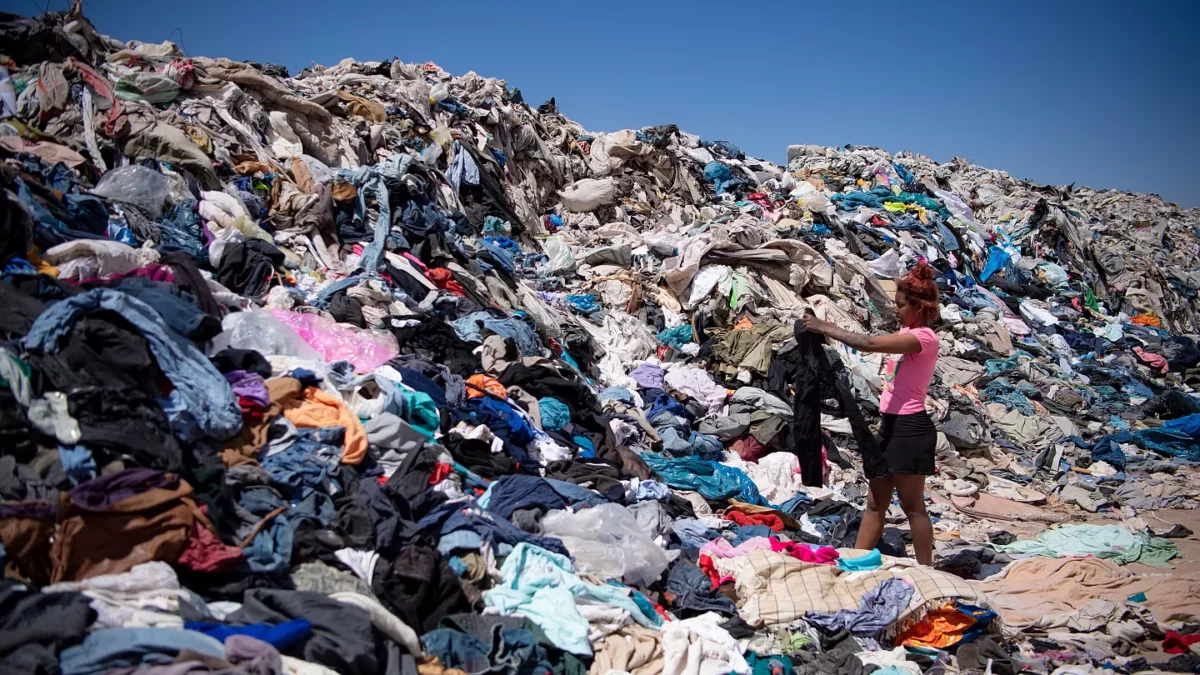
by Elaina Simonsen
An ongoing issue in our society is the desire for more. We long to purchase so much that we end up overconsuming. One of the main perpetrators of overconsumption and waste globally is the fashion industry. The desire to meet demand has caused companies to reduce the quality of materials used to produce clothes to get them out quicker. This is often referred to as ‘fast fashion’ and it is associated with low quality, low wages, and outsourcing. Fast fashion affects workers, the consumer, and the environment in a multitude of negative ways.
The Human Impact: Creation
On April 24, 2013, life in Dhaka, Bangladesh, would never be the same. A garment factory, Rana Plaza, collapsed killing 1,134 people and injuring thousands more. Many could look at this and deem it a “heartbreaking accident” or say that “no one could’ve predicted this,” however, that is wrong. On April 23, 2013, the day before the collapse, large cracks formed across the entire building. The bank and businesses below deemed it unsafe to continue work and closed their doors, however, the garment factories on the upper floors remained open. Greed killed thousands.
Most fast fashion companies outsource their labor to developing nations, leading to lower wages and less government regulation. The average wage of an H&M factory worker in Myanmar was $2.63 a day all while working 6 days a week. Although many fast fashion companies exploit the labor of workers outside of the United States, even in Los Angeles workers of fast fashion company Fashion Nova weren’t safe. They were paid $2.77 an hour.
The Human Impact: Consumption
No one is safe from the impacts of fast fashion, even consumers of these clothes are disadvantaged. The speed at which fast fashion companies churn out products to keep up with trends only leads to reduced quality while prices either stay the same or increase. Most fast fashion pieces only last less than 10 wears before they fall apart and are thrown in landfills – a waste of material as well as consumer money.
The Environmental Impact
To reduce costs the clothing is made of worse and worse materials like polyester, otherwise known as plastic or fossil fuels, which does not decompose. Since the quality is poor and the clothing doesn’t last, it ends up in landfills or waterways. These clothes can break up even further into microplastics which pollute our planet even more and are harder to clean up. The carbon footprint of fast fashion is also intense as most of the clothing is produced across the globe from the main hubs of fast fashion commerce, the United States, Canada, and Europe.
When informing about fast fashion, it is not about shaming those who cannot afford to buy sustainable clothing, but rather about recognizing our desire as humans to buy things we do not need. When we shop, we should look towards buying second-hand or purchasing clothes made of high-quality materials like cotton rather than polyester or rayon.
Elaina Simonsen is a freshman environmental science major concentrating in conservation biology.
Sources:
Cheav, Maya. “Fast Fashion and Outsourcing – Fashion Stores Always Seem to Have a Million New Products to Constantly Keep up with the Customer’s Needs. but Have You Ever Considered How They Make Their Clothes so Quickly?” Sustainability, 26 Feb. 2020, blogs.chapman.edu/sustainability/2020/02/26/fast-fashion-and-outsourcing/.
Kitroeff, Natalie. “Fashion Nova’s Secret: Underpaid Workers in Los Angeles Factories.” The New York Times, The New York Times, 16 Dec. 2019, www.nytimes.com/2019/12/16/business/fashion-nova-underpaid-workers.html.
“Rana Plaza.” Clean Clothes Campaign, 16 June 2021, cleanclothes.org/campaigns/past/rana-plaza.
Why High-Quality Clothes Can Break the Psychology of Fast Fashion – The …, www.washingtonpost.com/climate-environment/2023/11/07/long-lasting-clothes-fast-fashion/. Accessed 21 Jan. 2024.
